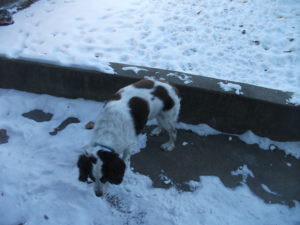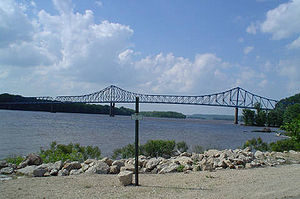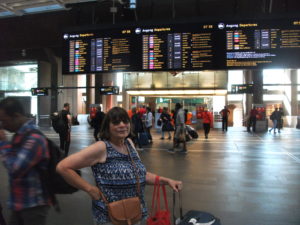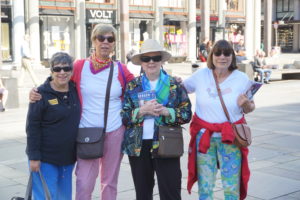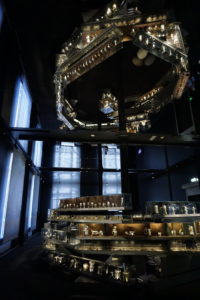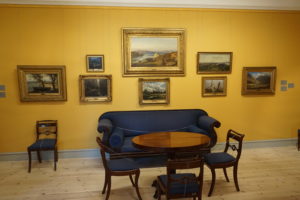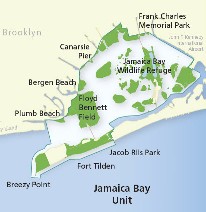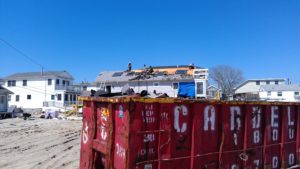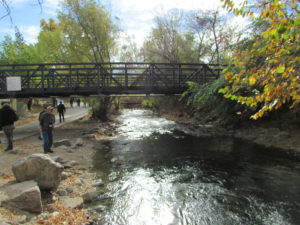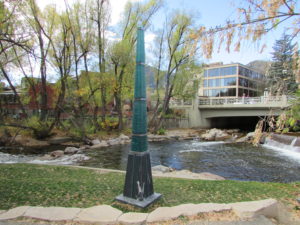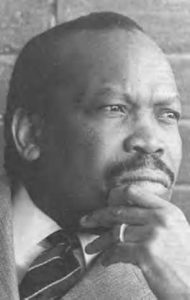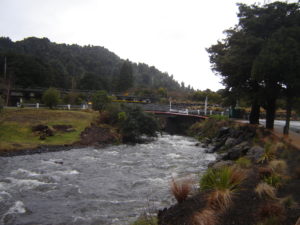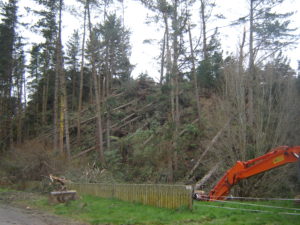We interrupt our regularly scheduled blog post . . . .
Tens of millions of Americans are accustomed to weather bulletins in winter months advising them of wintry conditions, whether they involve bitter cold or blowing snow. It is no great secret to anyone in recent days that even places as far south as Tallahassee, Florida, and Charleston, South Carolina, have been dealt an unexpected dose of the icy blast, while places like Boston and Maine, which have seen it all before, are being assaulted with both snow and icy storm surges from a northeaster.
With friends who inquire about my background, I like to joke that I have spent my life moving back and forth along the 43rd parallel. Born in New York, I was moved at a year of age to a suburb of Cleveland, Ohio, in 1950, where I grew up. In January 1979, I moved to Iowa, first to lead a statewide public interest organization, later to attend graduate school at the University of Iowa. By 1985, I moved briefly to Omaha, where my wife and I were married; she was a lifelong Nebraskan. By Thanksgiving, I had a job in Chicago, and we have been here since then. That also means I have spent about six decades along the Great Lakes, experiencing various aspects of the famous “Lake Effect.” One aspect is that it can dump a ton of snow in your backyard—and everywhere else. You learn to deal with it.
Chicago, by this weekend, is expected to complete a record-tying 12-day stretch in which the temperature has never reached 20°F. Overnight, it has often slipped below zero. I’d like to sound more poetic, but the simple fact is that it’s been cold out there. Our 14-year-old Springer Spaniel, Roscoe, doesn’t even want to partake in his usual long evening walks with my wife (or sometimes both of us). He prefers for now to take care of business in the snow in the backyard, then run to the kitchen door to be allowed back in. Dogs are very intelligent, practical animals.
When nature gets nasty outside, I tend to remember the first big test of my mettle in a blizzard. Unwittingly and unintentionally, I learned a great deal about myself from this incident. In February 1975, I bought a new Ford Maverick from a dealer in a Cleveland suburb. Radial tires were not yet in widespread use; drivers would use heavy-tread snow tires in the winter and lighter tires the rest of the year. With at most one month of winter left that year, I chose not to buy snow tires until the following fall.
However, in late April I drove this car with two friends to a small conference of progressive activists at Franconia Notch in New Hampshire, near Franconia College. At 25, I had never been to New England. For the first time, on the way up the purple mountainsides, I drove through fog that, when it broke, left us with clouds in the rear-view mirror. We drove past mountain lakes that were frozen on the shady side and rippling on the sunny side. Such scenery was exhilarating to an Ohio flatlander.
Don’t ask me what the conference was about. I no longer remember. All I recall is that, on the last afternoon, a Sunday, warnings began to circulate about an oncoming blizzard. It would be best for everyone to exit the mountain promptly to safer locations. The meetings were disbanded. It was the last weekend in April. I had never seen snow in April in Cleveland, so the thought that snow tires would be useful for this trip never occurred to me.
I soon learned otherwise. As we began our descent down the mountain, the wind whipped snow across the road, making visibility tough and traction even tougher. One thing I recall clearly is that I never panicked. Despite the nervous tension of my passengers, who had to watch me navigate with no control over their fate, I somehow summoned deep reserves of patience, kept my foot firmly but softly on the brake, and focused my eyes on the road ahead, cognizant of the deep chasms to the side. For perhaps the first time in my life, I became acutely aware that losing my nerve was not an option. Muscles taut, I steered the car downhill for what seemed like hours but was probably a mere 20 minutes. Eventually, my two friends were greatly relieved when we reached the base of the hill, which then led to an entrance to I-93, and then to I-91 and south to Hartford, and on through New York back to Cleveland. Where we stayed that night, and what path we subsequently followed home, is all a blur. The only truly emblazoned memory is that of driving down that slippery hillside amid a flurry of white precipitation.
What I learned was something akin to the famous British slogan, “Keep calm and carry on.” I learned that, in a crisis, I could call upon nerves of steel. Freaking out would have resulted in a wrecked car and possibly three dead passengers. Instead, we all got home safely a day later.
In later years, having been forged in that snowy ordeal, those traits reasserted themselves almost instinctively when new challenges arose. In January 1982, my old Plymouth died amid a bigger blizzard near Michigan City on the Indiana Turnpike, in what is ominously known as the snow belt (think “lake effect”), as I was returning after the holidays from Cleveland to Iowa City, where I would start graduate school later that month. Although I did not know the cause immediately, I learned later that the timing chain had snapped. Under such circumstances, the only option is to steer the limping car under its own momentum to the side of the road. I must note for younger readers that cell phones did not exist at the time. Some people, particularly truckers, had CB radios. The rest of us just had to wait for help. I retrieved a white emergency flag from the trunk and tied it to the antenna, noting sardonically to myself that this was of marginal value with the snow blowing and drifting in every direction.
For two hours, I sat patiently in the car, unable even to turn on the heater, and trying to stay as warm as possible under multiple layers of clothing. Finally, an Indiana DOT truck pulled up behind me and approached to find out what the problem was. He called a tow truck for me, whose driver then dropped off my car at a repair shop and took me to a nearby motel for the night. There may never be another motel room that will feel warmer. Whether and how I got some food for the evening, I don’t even remember.
The next day, I took a cab to the South Shore commuter rail station, rode to Union Station in downtown Chicago, and then caught a Greyhound bus for the five-hour ride to Iowa City, where I was greeted by 27 inches of snow but made it to a duplex I shared with roommates. I still can hear their voices when they greeted me at the front door: “He made it!” Later, when the snow was gone and the repairs to my car were complete, I took a day off from my new position as a graduate research assistant to make the reverse Greyhound-South Shore trip to Michigan City to retrieve my car and bring it home.
In between, I had a conversation outdoors with the same roommate, Paul, who first greeted me at the door. We were discussing the difference with weather in California. “This is great!” he exclaimed. “It keeps out the lightweights.” Californians, beware of Midwestern attitudes. We may not want your wildfires, but we can deal with the snow and the cold. We like to think we’re tough.
Of course, snow is hardly the only challenge nature can provide. On one occasion about two years earlier, I had been in Dubuque, Iowa, before heading south to another meeting. As I was following U.S. Rte. 52, aka the Great River Road, a thunderstorm erupted. At points, following the river bluffs, the highway is steep and the hillsides even steeper, but rain mostly requires careful driving. Unfortunately, as I watched in alarm, the rubber windshield wiper on my side of the car worked its way loose, and bare metal was scraping the glass, making a screeching noise that was about as unsettling as finger nails on a chalk board. I had to turn off the wipers while continuing downhill because there was no shoulder and I could not block traffic. This time, those steady nerves forced me to lean forward and watch with utmost care for the yellow stripes down the middle of the road, and stay just to the right of them until I made it to the bottom of the hill.
My ordeal ended in Sabula, the only Mississippi River island community in Iowa, which sits at the end of a causeway that leads to a bridge across the river to Savanna, Illinois. Although it was not a big deal in the larger picture, I also recall that the one service station in town charged what I thought was an outrageous price for a wiper replacement—sort of an ultra-miniature version of the small-town Arizona ripoff garage scene in National Lampoon’s Vacation. At the time, I just paid the price and gladly installed the new wiper. My car, at least, did not have to limp away. It drove away very smoothly.
That situation may have prepared me well for Louisiana a dozen years later. Researching for my book about the environmental justice movement, Deeper Shades of Green, I had driven one morning from Baton Rouge to meet two women activists in Lake Charles. I had spent the day with them touring the area and interviewing people before returning in the evening. The one and only obvious path for this trip is I-10, which crosses the Atchafalaya Swamp for about 50 miles, in many areas on a two-lane strip of concrete in each direction above water, interspersed with cypress trees, snakes, alligators, and mud. None of this, of course, is at all foreign to the numerous Cajun residents of small towns in southern Louisiana, but it was new and interesting to me. In the evening, however, an intense thunderstorm swept the area. While there are guardrails on the sides of the interstate highway, I was not interested in sliding into them at 70 mph. I drove carefully, but visibility at times was little more than 100 feet amid torrents of descending water. My patience was rewarded when I finally found an exit into a small town where I bought coffee at a Burger King and waited out the storm. I noted with amusement that no one needed to worry about being cited for speeding (if they were even foolish enough to do so) because the police were also hanging out at Burger King. Eventually, when it seemed the storm had passed, I drove back to the highway, only to catch up with the storm further on my route back to Baton Rouge. Perhaps I had not been patient enough. But I made it back safely, with yet another story to tell.
Nasty weather can teach us patience and perspective, if we are willing listeners. I am grateful that my lessons came at a young age when such impressions matter most. I must admit they don’t make me patient about everything. Computer software glitches can still sometimes send me up a wall. But there is a difference. I just pack up my laptop on a sunny day and take it to the Geek Squad. They make money doing what they do best, I vent some frustration, and nobody gets hurt. Who can question such a sublime outcome?
Jim Schwab


